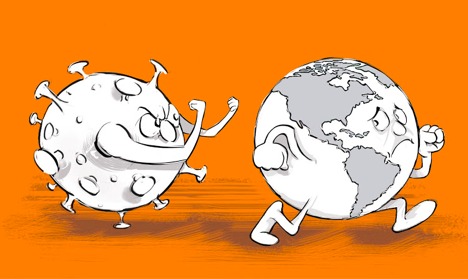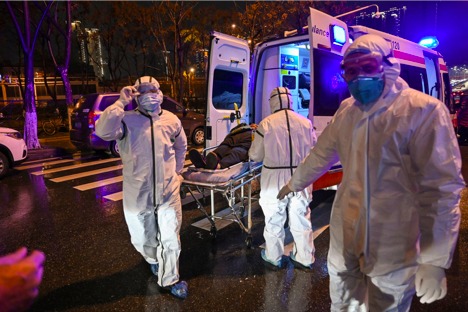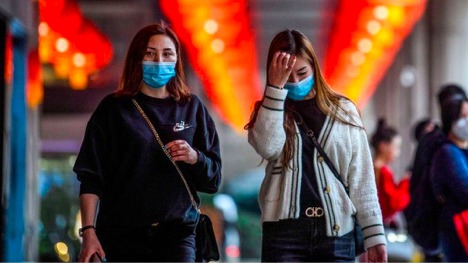Coronavirus COVID-19 continues its march on the planet. Almost every country is effected with this virus and more than hundred thousand people are infected and every second the figure changes rapidly. Out of many hundred thousand half of them are recovered safely and there is also a death rate there with many active cases are in quarantine and having treatment.
The critical situation no one could expect to be such a pandemic and would lock down countries fully. The government of all the countries are making their full efforts to their possible arrangements to overcome the whole spread situations but unfortunately we all are even the scientists who put their footprints on moon are unable to make hard and fast vaccine till now. Keeping on account the whole pandemic World Health Organization experts systematized everything that is known about the infection.
The entire world is threaten with this pandemic and we should all understand well what it is, what the risk factors and how to treat it. Covid-19 which is at its great pace pf spreading across the planet, WHO has revealed the facts after returning from China.
How is the Virus Transmitted and Manifested?
As the media and medical experts have repeatedly reported, one of the routes of transmission of coronavirus is airborne. In China, where an outbreak of infection began in December 2019, 75-85 cases of infection occur in this particular way. As for the transmission of the virus through touching objects, this is not the main cause of infection. If we talk about the doctors who were among the sick – and there are more than two thousand people, they were mainly infected not at work, but at home, or at an early stage of an outbreak of infection, when the magnitude of the threat was not yet understood, and tough precautions not respected.
In China, they constantly check everyone who went to the doctor complaining of a high fever – this is one of the symptoms of coronavirus infection. In order to meet this need, 1.6 million test kits are produced weekly in the country. The remaining symptoms in the form of dry cough, increased fatigue, muscle soreness, nausea and diarrhoea, as a rule, appear sometime after infection. The latent course of the disease is a relative rarity. Experts note that a runny nose is not a symptom of a coronavirus
Who is at risk?
The risk of coronavirus varies age to age as the younger people has lower chance to become effected more because they can easily tolerate the diseases in case of infection. The death rate is 3.4% and with a great majority of patients over the age of 70 years. Women become infected with coronavirus as often as men, but mortality among them is lower – 2.8% versus 4.7%. For pregnant women, the probability of infection is not higher than for everyone else, and nine women underwent a caesarean section, and this made it possible to avoid infection of children.
2.5% of patients needed mechanical ventilation, another 15% needed respiration of highly concentrated oxygen, which they needed for a long time. In severe cases, the duration of the disease is 3-6 weeks. Those who have a mild illness get sick for about two weeks.
20 percent of infected people need hospitalization for several weeks, in China hospitals are calculated at 0.4% of the population, in other countries this indicator varies from 0.1 to 1.3%, most often most of the places are already taken by patients with other diagnoses.
In China, the number of patients and the required duration of treatment have led to an acute shortage of beds in hospitals. A total of 45 hospitals in Wuhan, of which six were allocated for seriously ill patients, the rest – for those who are seriously ill or older than 65 years, that is, are at high risk.
What measures should be taken?
First of all, in step with WHO experts, it’s necessary to use the foremost stringent measures against the spread of the virus, so the quantity of severe patients remains at low level, and also to quickly increase the quantity of beds in hospitals. In Wuhan, new hospitals for those infected with coronavirus were in-built just some days, additionally, quarantine was announced within the entire province of Hubei, the executive centre of which is that the city, and entry and exit are closed. It’s also important to require care of medical personnel and material support – the provision of necessary medicines, equipment and private protective equipment. Currently, China is consistently acting on a vaccine against coronavirus, constantly testing new methods of treating infection. The foremost successful developments are immediately introduced in medical facilities throughout the country, and these steps have already got a result: within the PRC, the mortality from coronavirus has decreased compared to January. The quantity of infected people in China is gradually decreasing: on the average about 300 new diagnoses are confirmed per day, and a month earlier, doctors identified 3 thousand cases per day.
An effective way to counter the spread of the virus is to interview the infected about their contacts. After establishing the circle of people with whom the patients were in contact, potential infected people are identified by testing, which helps prevent further transmission of the virus.
Coronaviruses and their origin
Coronaviruses are not the small one but consists of large family of viruses that are named for their spikes like a crown on their surface. Coronavirus is divided in to four main subgroups known as alpha, beta, gamma and delta. It has been observed that they commonly affect animals but humans are also exposed to its few verities. Such coronaviruses were first detected in the mid-1960s, and today there are seven known varieties of viruses that can cause infections in humans.
Conventional human coronaviruses cause SARS and mild infections, but in some cases can cause severe respiratory infections and pneumonia in immunocompromised patients or cardiopulmonary diseases. At risk here are small children and the elderly.
- 229E – alpha coronavirus;
- NL63 – alpha coronavirus, also causes false croup and bronchiolitis in children;
- The remaining coronaviruses were initially zoonotic, but adapted and began to affect people.
SARS-CoV is a beta-coronavirus that causes so-called SARS. During the 2002-2003 epidemic, more than 8 thousand people fell ill, 774 people died. The virus originated in the Chinese province of Guangdong, the source was probably the bats that transmitted it to palm civets, Chinese badgers, ferrets and raccoon dogs. All of these animals were sold for food, and as soon as the authorities introduced a ban on it, the outbreak ceased.
MERS-CoV is a beta-coronavirus that causes the so-called Middle Eastern respiratory syndrome. He was identified in Saudi Arabia in 2012, a total of cases of infection were reported in 23 countries. WHO recorded 2.5 thousand confirmed cases of infection and 851 deaths. The source of the disease was infected dromedary camels, but the virus can also be transmitted from person to person.
COVID-19 – beta-coronavirus, originated in the Chinese province of Hubei. Mortality at the moment is 3%, which is significantly lower than that of SARS-CoV and MERS. This virus is 96% genetically identical to the already known virus in bats and is 86-92% identical to the lizard virus.
Recommendations for the public
WHO took the whole pandemic on a serious note and forward a series of recommendations to reduce the likelihood of coronavirus infection. In particular, experts recalled the need to regularly wash their hands with soap and use disinfectant containing alcohol. People are greatly advised to maintain a social distance on public places at least of one meter from the other people, and in the case of people having symptoms of cough and cold must have mask on their face. Experts advised continuously people not to touch their eyes, nose and mouth in fact avoid touching their face as it could be a source to transfer infection in your body.In case of malaise, fever, they recommended coughing up and breathing difficulties as soon as possible to seek medical help, and when visiting countries with an unfavourable epidemiological situation or in contact with someone who returned from there, inform the doctors about it. People from the other countries have become the source of viral spreading in many countries. In addition, specialists reminded people who arrived from areas where coronavirus spreads the need to observe self-isolation and, in case of symptoms indicating infection, inform doctors about their movements and contacts. Do not move to the hospital unless and until you are in critical condition till than keep yourself isolated in your home with all safety measures for your family.
Author Bio: Hey, I am Maria Lena. I have done my MBA in Marketing from a well-known university. Now I am working at law assignment help in United Kingdom.




